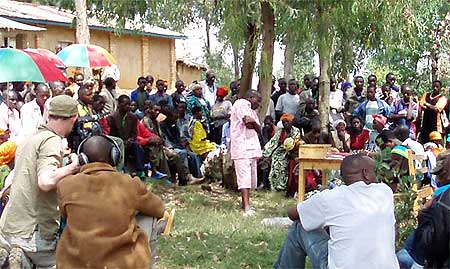Handling the aftermath of the genocide After the 1994 genocide against the Tutsi in Rwanda, there was a need to handle its aftermath. The hatred, pain and guilt that both the families of the survivors and the perpetrators of the genocide felt, were enormous.


Handling the aftermath of the genocide
After the 1994 genocide against the Tutsi in Rwanda, there was a need to handle its aftermath.
The hatred, pain and guilt that both the families of the survivors and the perpetrators of the genocide felt, were enormous. The government was struggling to unite shuttered communities and families.
Issues to do with punishment or justice were the fundamental standing problems to address, in the aftermath of the 1994 Genocide against the Tutsi.
The issue of punishment
After the genocide, people in society desired to continue with their lives. But to that, equilibrium needed to be restored. That meant that criminal justice with similar atrocious acts is what many called for. It was understandable especially when Rwandans had lost their beloved ones, yet had to start life a new with fresh challenges.
In this regard, there are those that called for retribution and those that called for the restoration of people’s humanity. This is still the case today in Rwanda.
The response seemed contradictory to each other, however, these solutions all aimed at the same thing—they provided answers to the call for justice.
Retributive justice was seen as revengeful while restorative justice was seen as letting the perpetrators of the 1994 Genocide against the Tutsi, go scot-free.
This meant that punishment had to be understood, so that when applied, an end result that did not correspond to the genocide effect was reached.
The ‘tooth for a tooth and eye for an eye’ approach could not work. With this approach, it meant that a new cycle of death would be repeated.
It meant that, the genocide survivours and the body responsible for implementing justice on behalf of the victims would not be any different from the perpetrators of the genocide.
It is therefore agreed that punishment is justifiable when it aims at transforming the mind of the perpetrator, to accept responsibility and change the orientation with regard to how one has to live with other human beings.
However, assertions based on retributive ideas like this one below, couldn’t work.
"Punishment is a reward, a compensation or kind of reward of annulment of crime…it is a balance that the crime has upset,” said Odera Ruka, a retributivist.
The anger and desire for retribution felt by many Rwandan people especially the genocide victims and their families meant that the call for death was wide spread after 1994.
But the call for the death punishment raises a number of questions that disqualified it. For example; is the death penalty retributive enough? Given the gravity of genocide, one must consider whether there isn’t equality of unthinkable arbitrariness in advocating for the death of murderers as an appropriate retributive just punishment.
Why should death before a firing squad be equated to the slow and painful death of the victims of the 1994 Genocide against the Tutsi in Rwanda? Does it really meet the requirement of retributive justice when one thinks of the brutal and savage character of the Interahamwe murderers in Rwanda?
Retribution cannot be anything less than equally savage methods of execution for the murderers.
Otherwise if allowed, the kind of death given by retributive justice in Rwanda would have been sweet revenge. However, this is prohibited by Rwanda’s societal moral restraints.
Albert Camus a French writer once remarked that:
"For there to be equivalence, the death penalty would have to punish a criminal by having his victim inflict a horrible death on him/her ... and have him confined at his mercy for months.”
Such a monster is not encountered in private life. Rwanda as a nation cannot afford to create the situation stated above and could not as a result, give equal punishment to the perpetrators of the 1994 Genocide against the Tutsi.
Retributive justice hence couldn’t have served what it claimed to serve.
Gacaca and Restorative justice
Gacaca as a form of restorative justice was chosen as the best way to punish the genocidaires. It is in Gacaca courts that all parties with a stake in hand come together to resolve collectively an outstanding issue, given the aftermath of an offence and its future implications.
It puts emphasis on the restoration of the genocide victims, offenders and communities affected by the crime. This is done irrespective of the dimensions of restoration.
Gacaca as a restorative form of justice has not been limited to the individual level, but is applicable to the institution level as well.
Though Gacaca doesn’t preclude punishment, it involves a lot of mediation and reconciliation bringing the victims, offenders and the interested parties together, to discuss the wrong committed and how to deal it.
Jean Damascene Rwasamiria, the Chairman of an Appeal Gacaca court in Rwamagana said that, most people especially foreigners have failed to understand what Gacaca Courts, have been doing in Rwanda’s post genocide society.
He said that Gacaca Courts in Rwanda have not only been restoring the perpetrators of the genocide, but are also resolving the wrong that was done.
"The wrong is taken to be what fractured the relationship between offenders and victims and the wider community. The Gacaca justice system aims at restoration of social equality,” Rwasamiria said.
"It requires social dialogue that includes wrong doers, sufferers of the wrong, and the community to which they belong. It demands concrete consideration of the needs of each of the protagonists in order for restoration of social equilibrium to occur,” he said.
To be continued…


